Anthropomorphizing Career Exploration
Case Study
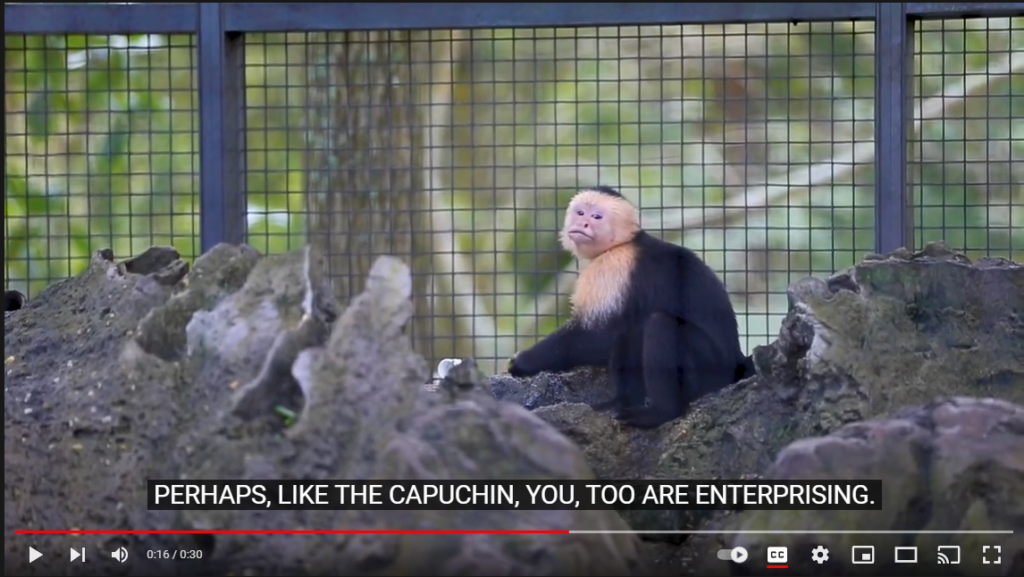
Award Winner
This project won the Gold Paragon Award for Best Online Marketing Campaign at the 2021 National Council On Marketing & Public Relations (NCMPR).
Overview
Santa Fe College (SF) was recognized in 2016 as the #1 community college in the country. It’s mission is to add value to the lives of students and enrich the community within it’s two-county service district in North Central Florida. There are countless points of entry to the college — both online and physical . The largest is SF’s AZA-accredited teaching zoo. It’s a popular weekend destination, and year after year elementary schools bus their kids in for field trips.
A lesser known point of entry is the Career Exploration Center (CEC), an office on the main campus where anyone from the community can talk with an advisor and take personal assessments to better understand their own skills, strengths and interests. This process helps students make more informed decisions about their career path, like what they should study in school. Students aren’t required to visit the CEC, but those that do rave about it.
Our goal was to drive more students to the CEC, so they could begin their college journey with greater clarity, confidence and self-awareness.
Problems & Opportunities
In late 2019, we had a relatively “tame” problem. An opportunity, really. A local science museum was inviting businesses and institutions from the community to participate in a field trip experience for fifth graders, and they wanted the college/zoo to participate. Then came the wicked problems of 2020. The world was in lockdown. The college entire was operating virtually. Enrollment was dropping. Mental health was tanking. Students were in crisis. My staff were pulled in every direction, and I needed a general marketing campaign to run for the fall, just after the presidential election. Oh boy! With zero humans on campus, my videographer could do two things: repurpose old b-roll... and film non-humans.
Users & Audience
The initial trial targeted fifth graders attending a science museum field trip. A later iteration targeted people in the local community, specifically those who were un- or under-employed during the pandemic.
Roles & Responsibilities
As Director of Marketing & Communications, I developed recruitment strategies. For this project, I was responsible for the content strategy and design, writing ad copy, and prototyping final deliverables.
Process
Empathize
Students change majors. Workers change careers. It happens. Except when it doesn’t. Sometimes people end up really unhappy, for a really long time, because they don’t love what they do and they aren’t playing to their strengths. Staff at the CEC have observed that many people don’t know their strengths or how to identify them.
Define
John Holland started publishing research on vocational personalities and work environments in 1959, eventually developing Holland’s Theory of Vocational Personalities. Colleges around the world use his six archetypes to advise students. We decided to use the vocational archetype to define our statistical user personas — representing potential community college students. (Holland’s methods included self-directed search, vocational preference inventory, and position classification inventory.)
Ideate
The idea to blend the zoo animals and the Holland archetypes was spontaneous, but came out of the Buzzfeed era of quiz-based social media engagement strategies. As the project took shape, I facilitated a brainstorming session among subject matter experts to create anthropomorphic proto personas based on Holland’s statistical ones. The coordinator from the Career Exploration Center explained the traits of each archetype, and the programs at the college that might be a fit for each. The director and conservation specialist from the teaching zoo suggested animals with behaviors that might fit the different profiles. I asked questions related to the feasibility of capturing behaviors on camera, and suggested we diversify the final six animals across class and order (so they weren’t all birds or all reptiles). Zookeepers were consulted to determine if any animals might experience stress if they were included in the project. Then, via email, final suggestions were agreed upon.
Prototype
The idea for the field trip was to have a volunteer offer a tablet to help fifth graders take a short quiz to determine their “animal work personality.” We designed the quiz in Qualtrics and modeled it after the shortest of the Holland codes assessments. I worked with the CEC coordinator and a small focus group to adapt the language of the quiz to be age-appropriate, so the context would be geared toward preferences for play-based experiences, rather than actual work environments. After students took the quiz they would receive a trading card with a picture of their animal and microcopy about strengths and career possibilities, as well as conservation tips from the zoo. The cards were designed in Adobe Illustrator and went through several review cycles in PageProof, a collaborative online proofing environment. Stakeholders carefully reviewed language and photo depictions of the animals. (There are strict AZA guidelines for how certain animals can be portrayed.) In addition to the cards, the fifth-graders also received a complimentary ticket to the zoo, good for their entire family.
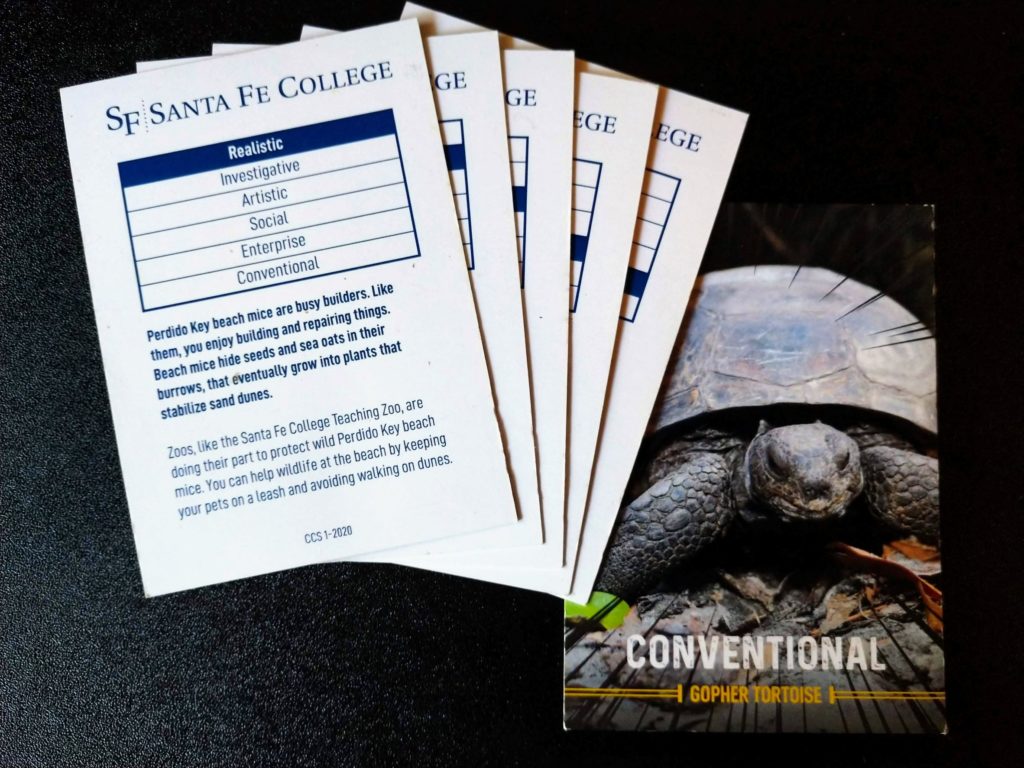
The idea for the subsequent wicked problem was to run a digital marketing campaign with a 30-second digital radio and YouTube ad for each animal. Our timeline didn’t allow for a refresh on creative, but I planned to test the ads on our digital platforms, then run the top performers on traditional radio and network TV. The landing page for the campaign would need to carefully combine multiple CTAs and have a short but memorable URL for the traditional media scripts.
Thirty seconds is pretty tight real estate to cover fairly sophisticated animal behaviors, popular career opportunities, the idea that someone can help you with career exploration, and a unique selling proposition for the college. I wrote the same line for the last ten seconds of each script, “At Santa Fe College, we can help you find your work personality and plan your next steps to a rewarding career.” But then each animal’s introduction was unique:
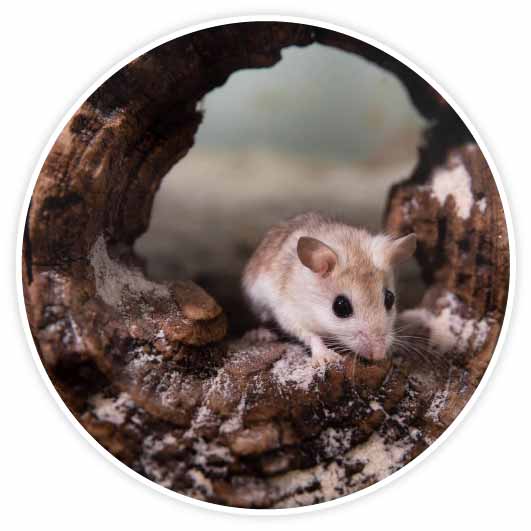
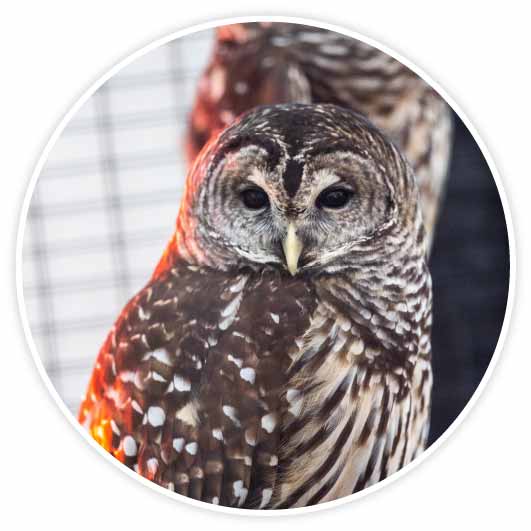


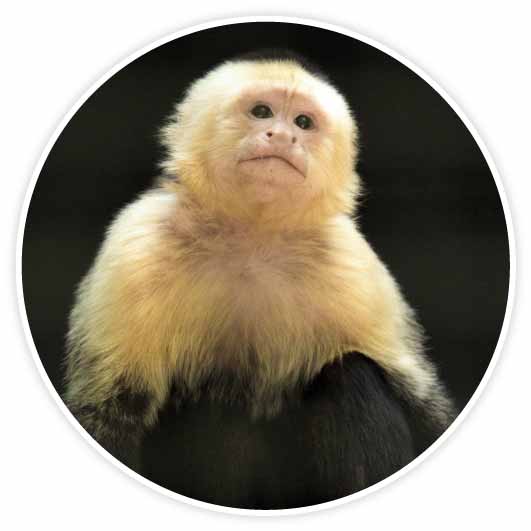
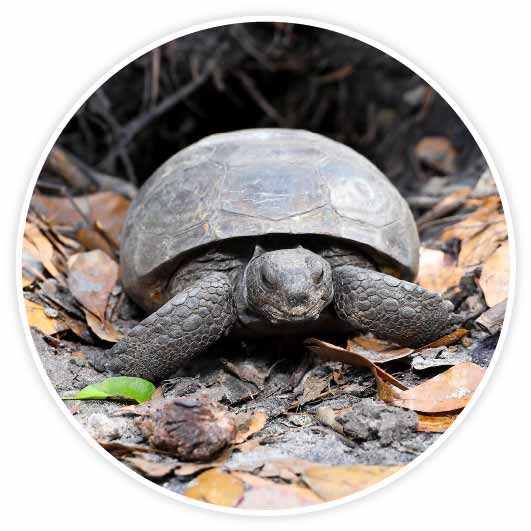
Due to their very limited ability to take direction, the filming of the zoo animals happened concurrently with storyboarding. We’d get footage, we’d see what we could use. Then we’d go get more if we needed to. (Side note: If you ever have a capuchin who just will not show up for the camera, give it half an onion. They’ll rub it all over themselves and act like they’re Marlon Brando.) For the human footage, we held team brainstorm sessions, jogging our memories to old projects where we had taken career-oriented b-roll. Again, the storyboarding was iterative— we kept mining puzzle pieces of footage and rearranging them until they fit the script (and the AZA guidelines).
I wireframed the landing page in Adobe XD before asking graphic and web designers to weigh in, and implement. The CTA for the ads was “Explore Your Work Personality” so we needed a link to the actual Holland test, which was on a third-party site (ouch, new window), as well as links to the CEC and teaching zoo. After sharing the wireframes with a student focus group, I added an ordered list above the six animals, so users would know what steps to take lower on the page.
Test
The field trip had a high rate of participation and satisfaction. The fifth-graders had lots of activities to choose from at the science museum, and ours proved to be among the most popular. The free tickets to the zoo might have skewed that, but staff who directly observed the interactions reported the students had no trouble completing the quiz or grasping the concept.
The digital marketing campaign was also well received. The landing page quickly ranked among the top ten highest-trafficked pages on the college’s 2,000+ page site, and it stayed that way until the ads stopped running. The CEC had a significant uptick in calls and appointments, and though we didn’t point to it directly, the virtual tour that was on the teaching zoo’s website also picked up a lot of traffic throughout the campaign. Of the YouTube videos, the “Artistic” Fulvous Whistling Duck was the most popular. Not surprising, the “Realistic” Perdido Key Beach Mouse came in last (it fit the bill as a hands-on worker, but its adorable pink habitat didn’t scream “HVAC technician” or “construction worker” And changing its environment wasn’t an option). In the end, while some did better than others, all of them had high-performing click-thru rates.
Outcomes
The digital marketing campaign was the tipping point at which application rates for the college started to rise again, even as enrollment rates remained in decline. Throughout the pandemic, retention rates suffered at SF and colleges around the country. But we succeeded in recruiting new people. By the end of the campaign we saw a 40% increase in applications.
As more informational and navigational resources became available on the college website, I designed a user story that could be used for a reprise of this campaign. It includes strategies for retargeting folks in the middle of the conversion funnel with pay-per-click (PPC) ads in search results:
On a personal level, there was a great irony that the ultimate goal of the project was to help people love what they do, as I was completely loving what I was doing throughout the entire process. The collaboration and creativity on this project was pure joy. I like to think that in the face of all those wicked problems, during the grim fall of 2020, this campaign had some part in lifting spirits and making people smile.
